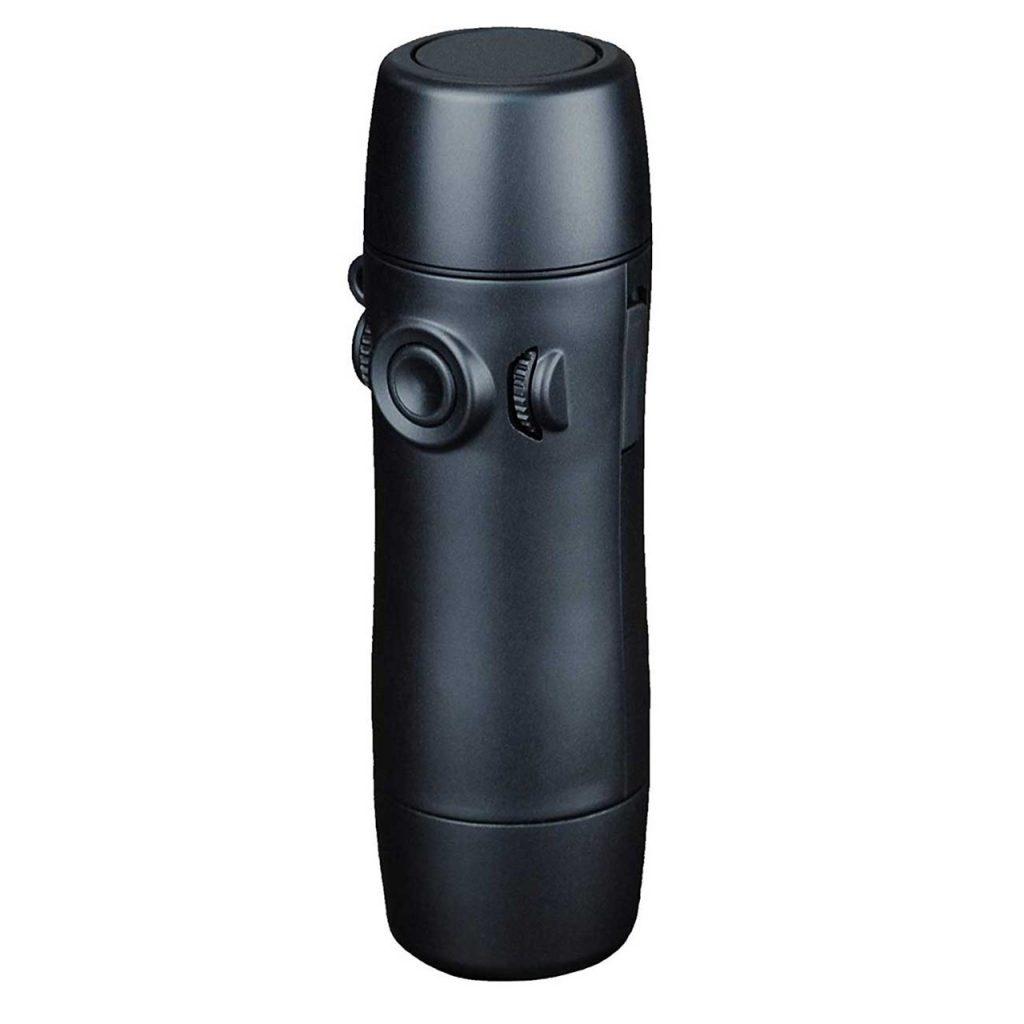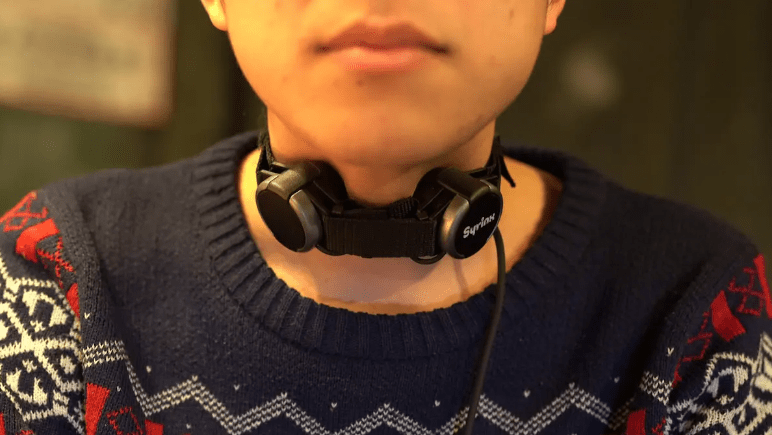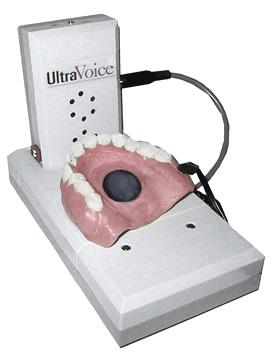Throat cancer isn’t just a dangerous disease, the “cure” for it most often leaves the victim without a voice. Here I talk about my continued journey, and what is available to help.
Silence
Silence. There has been a lot of it in my house the past two and a half months. A lot of silence. As you can read in my two previous posts on my throat cancer (You Have Cancer, and Throat Cancer-The Hidden Danger), I was diagnosed in early March, and had a biopsy and tracheotomy tube inserted in the middle of that month. Then a laryngectomy done in early April, leaving me with a hole in my neck (called a “stoma”) to breath through.
This means that I no longer have a voice box, no way to naturally speak. Silence.
Now I have to find ways to communicate.
Ways To Communicate After Throat Cancer
Hand Gestures
Hand gestures were the most natural way to communicate. Pointing to something, or making some sort of pantomime motion worked somewhat, but not quite enough to convey my wants and needs.
When Mrs. Larry would ask if I wanted to do this, or that, I learned to hold up one or two fingers to indicate which I wanted.
Still, there’s a lot of frustration with this, since there is only so much you can say with your hands.
Phone App
Before I went in the hospital, I at least had the presence of mind to anticipate the outcome. I researched ways to communicate and found a few apps I could use. I settled on “Speech Assistant AAC” by ASoft.nl. Available for both Android and Apple. It gave me the ability to type anything on my phone and it would read it aloud. I could save frequent phrases and simply tap them to have it read them out loud.
While this was better than complete silence, it was not by any means, a real good solution. Quick thoughts and phrases were fine, but if I had something lengthy to say, it took a bit.
We recently went to a family gathering, and I really felt left out. If there was a conversation going on, by the time I got something typed out, the subject had changed a couple of times.
So while a phone app is better than gestures, it’s still not the way to go.
Esophageal Speech
Esophageal speech is basically where someone swallows air into their stomach or esophagus, then directs it out like they were breathing out of their mouth (remember when as kids we would try to burp the alphabet?”).
This is difficult for many to learn, plus it isn’t very loud. More like a whisper. Not good to be used in a noisy setting.
Electrolarynx

I was given an electrolarynx (“EL”) in the hospital (I say “given”, I’m sure it was billed to insurance). This is a device that one presses to an area in the neck and pushes a button to make a vibration that resonates out of their mouth. This enables someone to speak with a very robotic voice, but a voice none the less.
I was not able to use the EL due to too much swelling in my neck, which is normal for throat cancer patients. I could not get a sound to come out. The alternative was the “oral adaptor”. This is a rubber cap that is placed over the head of the EL and fitted with a tube that is inserted into the mouth. It’s far from perfect, some sounds came out very good (“M”, “N”, “L”, “B”, etc.), while others could not be understood at all (“G”, “S”, “C”, for example). I could say “My name is Larry”, but try “I’m going to the store”, and it came out like Charlie Brown’s teacher.
It wasn’t until just a couple of days ago that the swelling had gone down enough to allow me to use it against my neck. This was a game changer. I was now able to talk!
Tracheoesophageal Voice Prosthesis (“TEP”)
The Tracheoesophageal Voice Prosthesis is a method of a surgeon puncturing a hole between the back wall of the trachea, and the front wall of the esophagus, then inserting a small one-way valve in the opening. Under normal conditions, nothing changes, but if one closes off the stoma, and breathes out, it forces the air into the esophagus, causing it to vibrate and allowing that vibration to come out of the mouth.
This is a more natural sounding voice, but does have some problems such as having to be replaced every six weeks or so, and sometimes getting stuck open or closed. Closed would mean that it wouldn’t work, open, however would allow food and liquids into the trachea (not a good thing). Plus while I have seen some people getting one inserted at the time of the laryngectomy, most recommend to do this at a later date after everything has healed, and any radiation and/or chemotherapy has been completed.
I am debating this one, and I will continue to evaluate it as I get closer to when it might possibly be available to me.
Update: I was evaluated, and cleared to get a TEP. The procedure was this past March, and I am now using it instead of my EL.
It does have some drawbacks, leaking every now and then (“leaking” is when the valve gets stuck open and liquids flow the wrong way, from my throat into my windpipe), and “blowouts” which is when the adhesive baseplate becomes unglued and air leaks out, meaning air no longer flows into my throat.
Other than that, It is wonderful to be able to talk and express myself. I even have the same inflection in my voice that I used to have.
I’ll write a more detailed post on TEPs at a later date.
Seeing, Hearing, and Speaking
Those are basically three ways people communicate with each other, and is seems like since we non-speakers are in the minority, the emphasis is on the other two. Right now those listed above are the options for us, but let’s look at what might be down the road:
The Future
Every now and then some new idea pops up, but like many new ideas, they don’t all make it to market.
Syrinx

This one popped up a couple of months ago. The Syrinx It claims to be a combination of an EL, and a voice synthesizer, wearable on the neck in a hands-free manner. What I’m seeing in their photos are people who are not laryngectomy patients, I’m wondering why. It looks like the neck band might cover up the stoma.
UltraVoice
UltraVoice is a device worn inside the mouth with a controller that transmits radio waves to it, causing vibrations that allows the person to speak. It appears to have only been available for a month, and looks promising.
Artificial Voice Box Implant
This article about an artificial voice box implant is 5 years old, and I can’t find anything else about it.
The Options Are Limited
There’s not much else out there. I’m hoping that better options will come along. Until they do, the above is pretty much what we have.
Not So Silent After Throat Cancer
I’ll leave you with this: We’re not so naturally silent after all. Since there is just a straight funnel between our stomach and mouth, all kinds of strange sounds emanate from there. Sounds we can’t control.
So if you hear something that sounds like a pig arguing with a bullfrog, it’s probably one of us.

